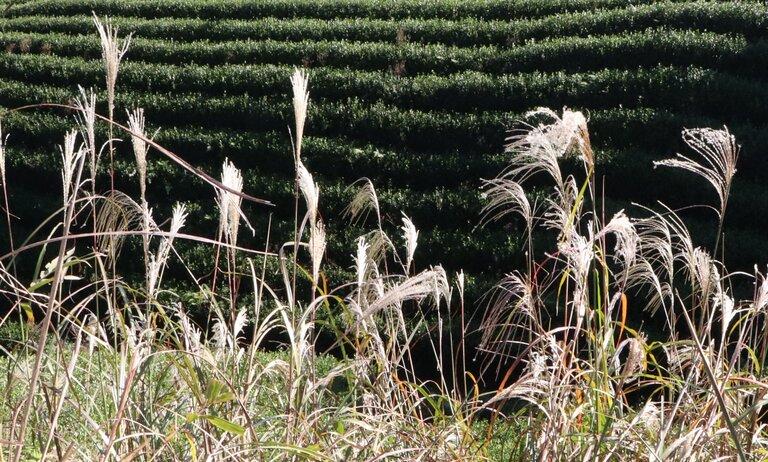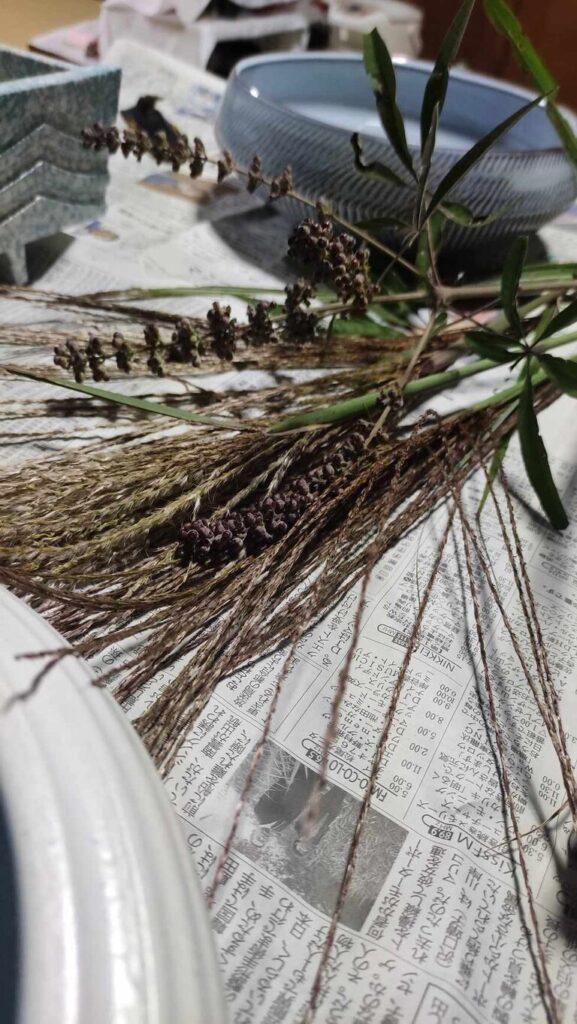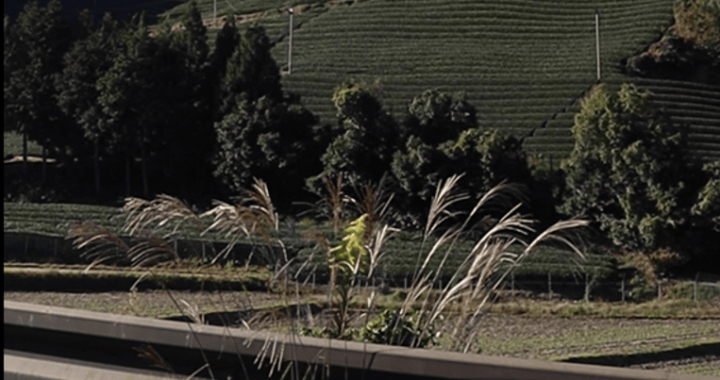On a cold Thursday evening of October, as we entered Nakai Sensei’s tearoom, Sara, Jean and I noticed an unfamiliar object. Moe, another student of our teacher, was practicing sado (tea ceremony) using a mizusashi (water container) that was particularly tall. Nakai Sensei explained to us that this shape of pot was only used in October. She then showed the decoration on the pot: elegant plant stems ending with silver plumes were carefully painted on the black background. This was my first encounter with susuki.

Hello! This is Sarah, and every month I write a few notes on the flowers that appear around Wazuka.
This month, the sides of Wazuka were embellished by susuki, gently waving under the breeze.
Susuki, whose botanical name is Mischanthus sinensis, are known in English as Chinese silver grass. They are native of East Asian countries, like China, Taiwan and Japan. The stems usually grows to one or two metres. The flowers remind of feathers, and they go from a yellow colour to silver and purple.
As we started the autumn harvest, I couldn’t help but notice immense expanse of purplish silver grass around the tea fields.
One afternoon, David (intern #158) enthusiastically dragged Sara and me to Ikebana class with Nakai sensei. With their sturdy but flexible stem and the elegant flowers, susuki were the main character of our compositions!


Now, I am very curious about which flowery surprise November will bring!
Until then, have a brew-tea-ful time!
Sarah


Interesting!